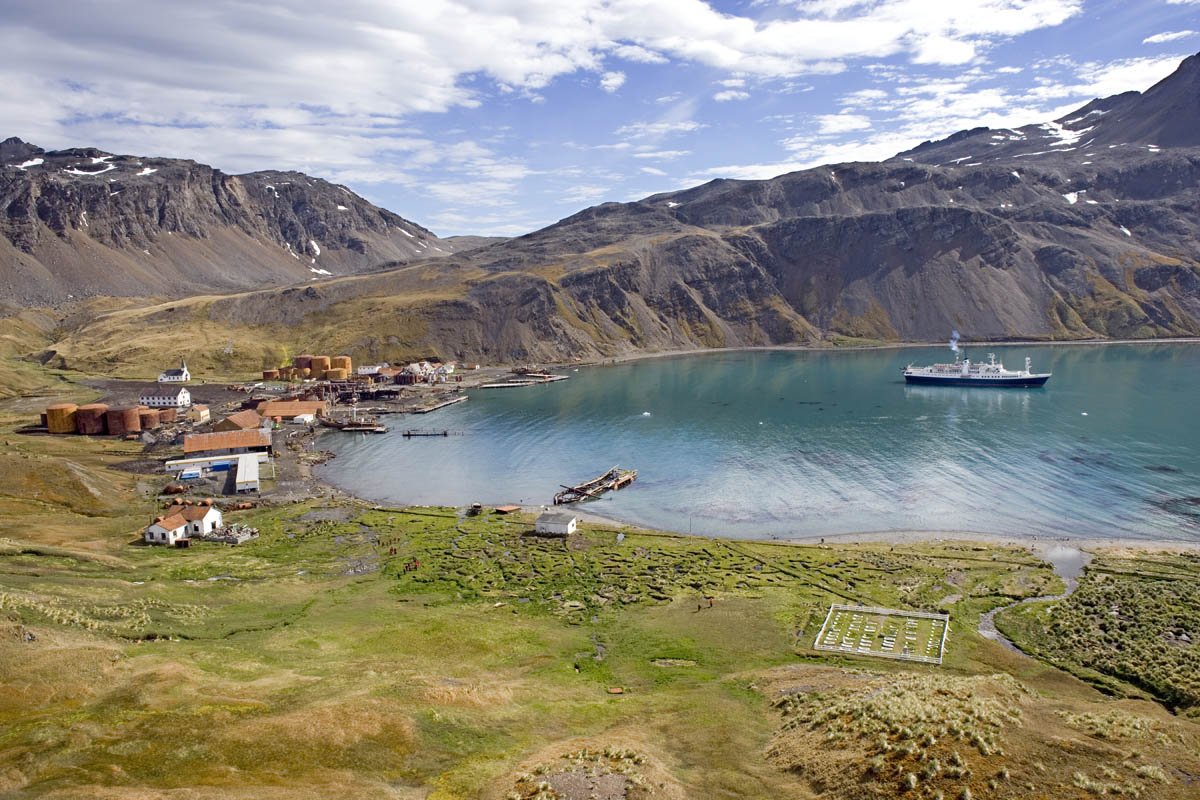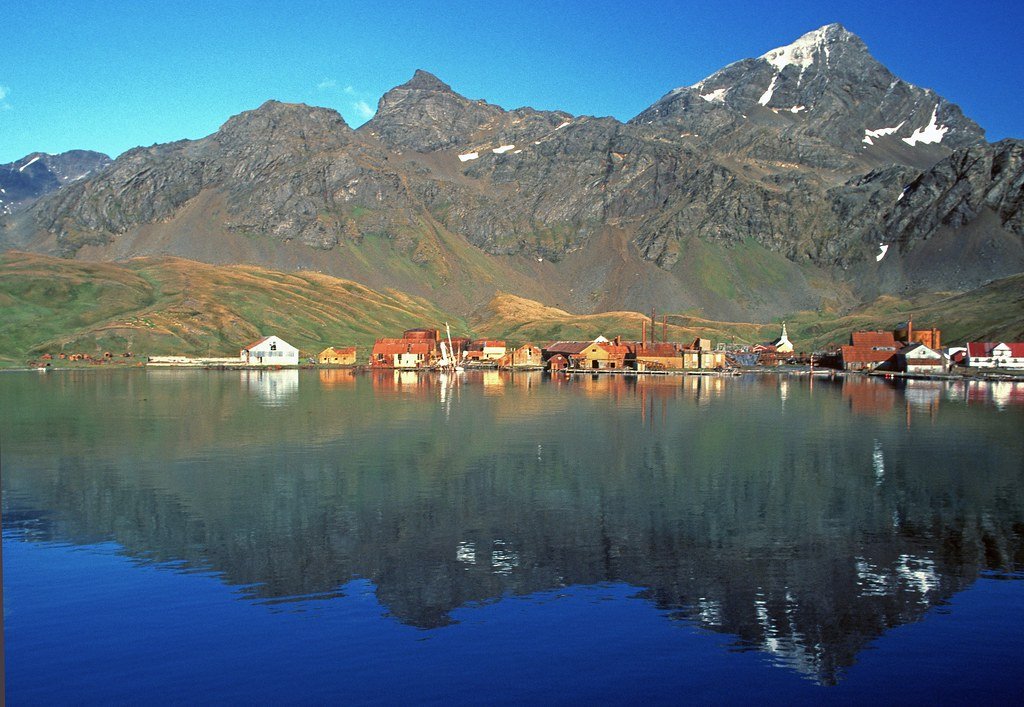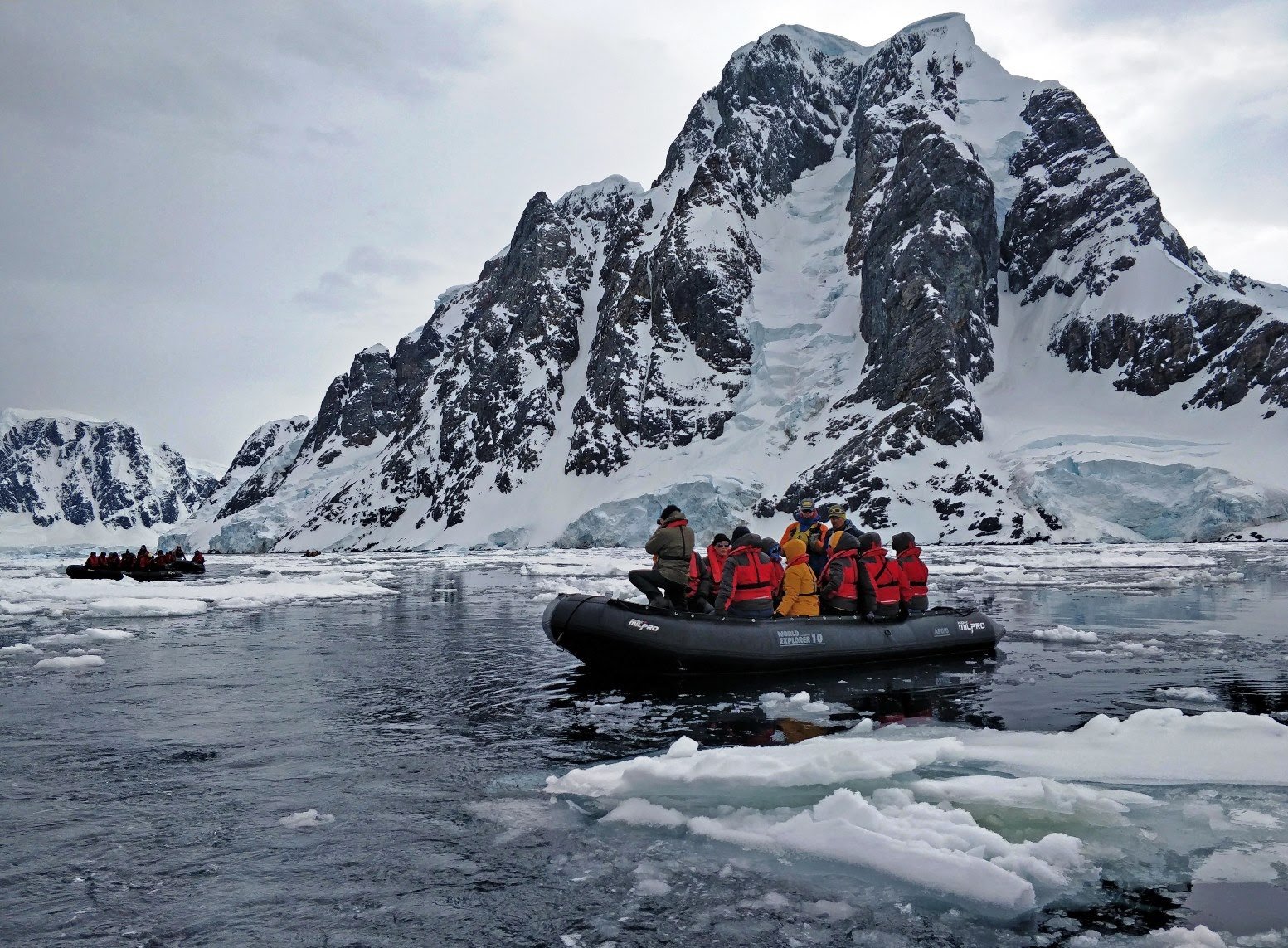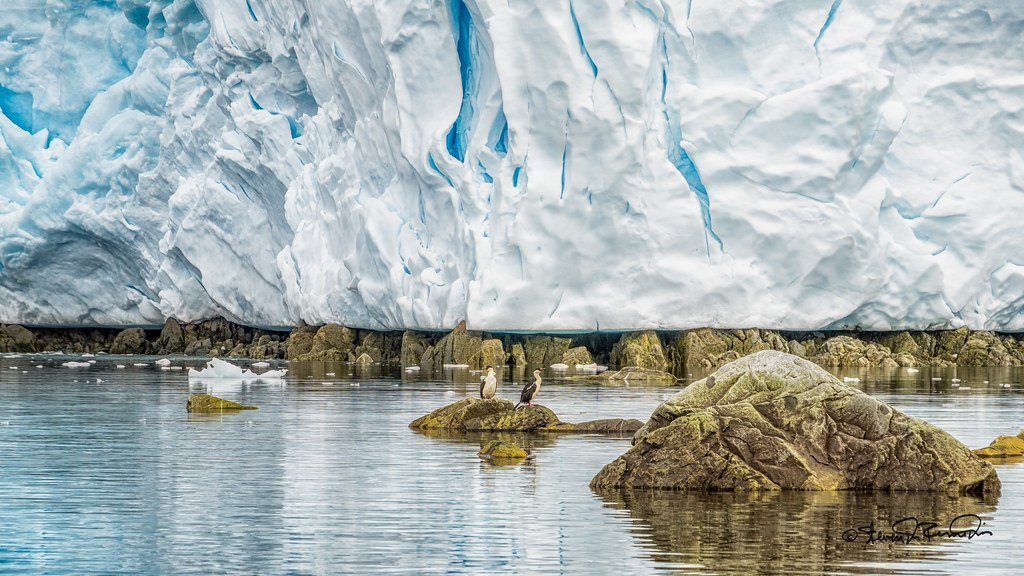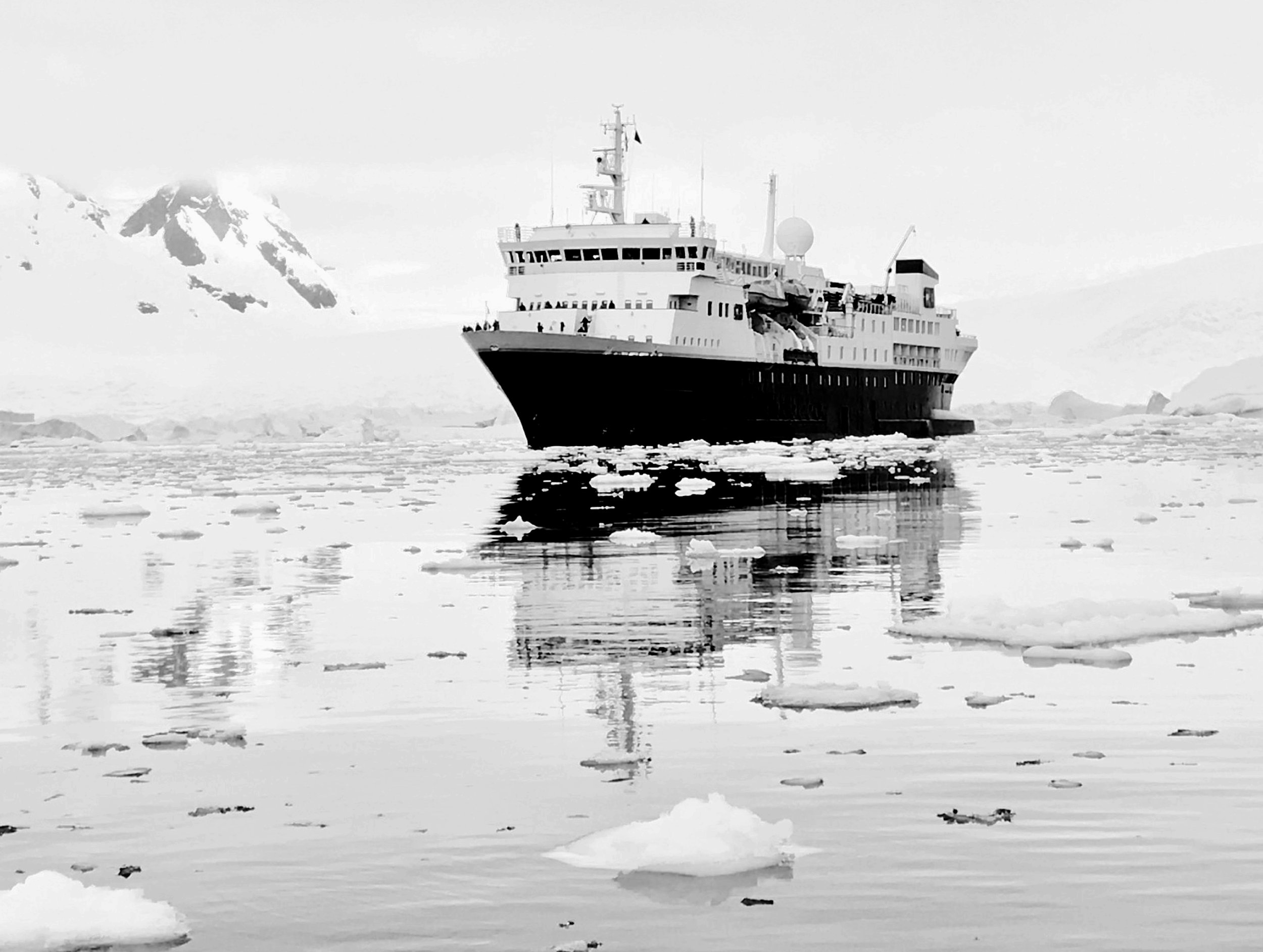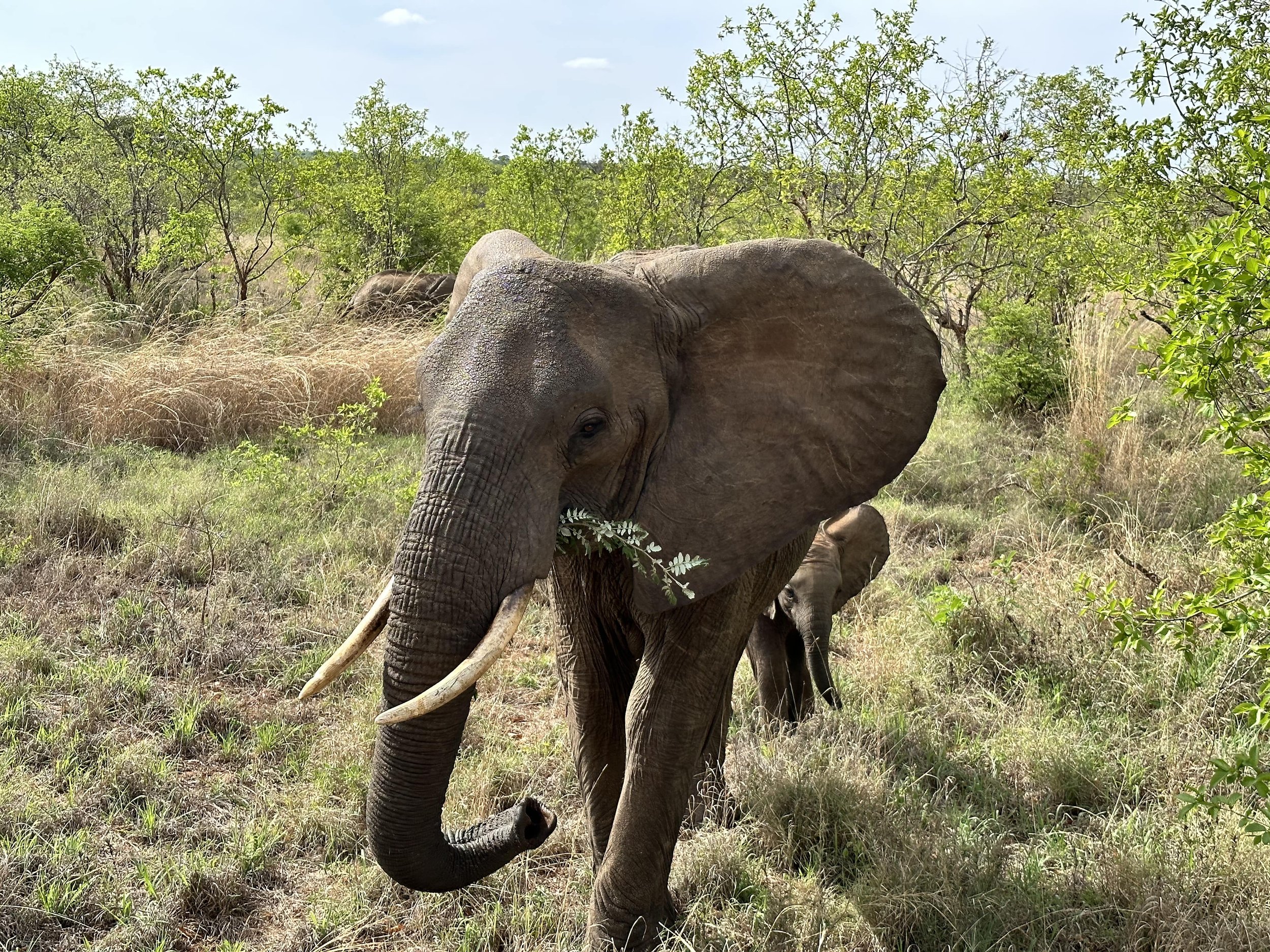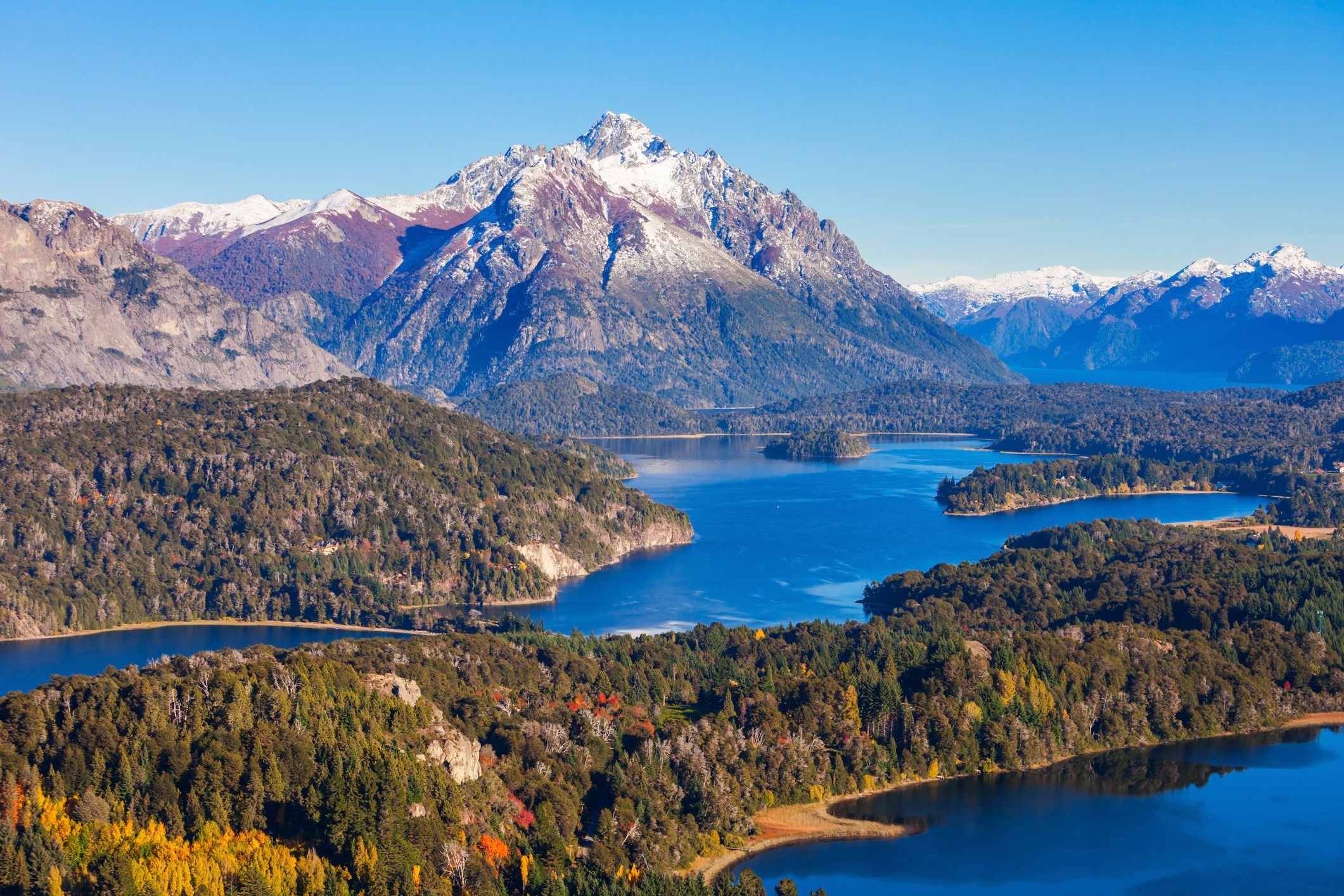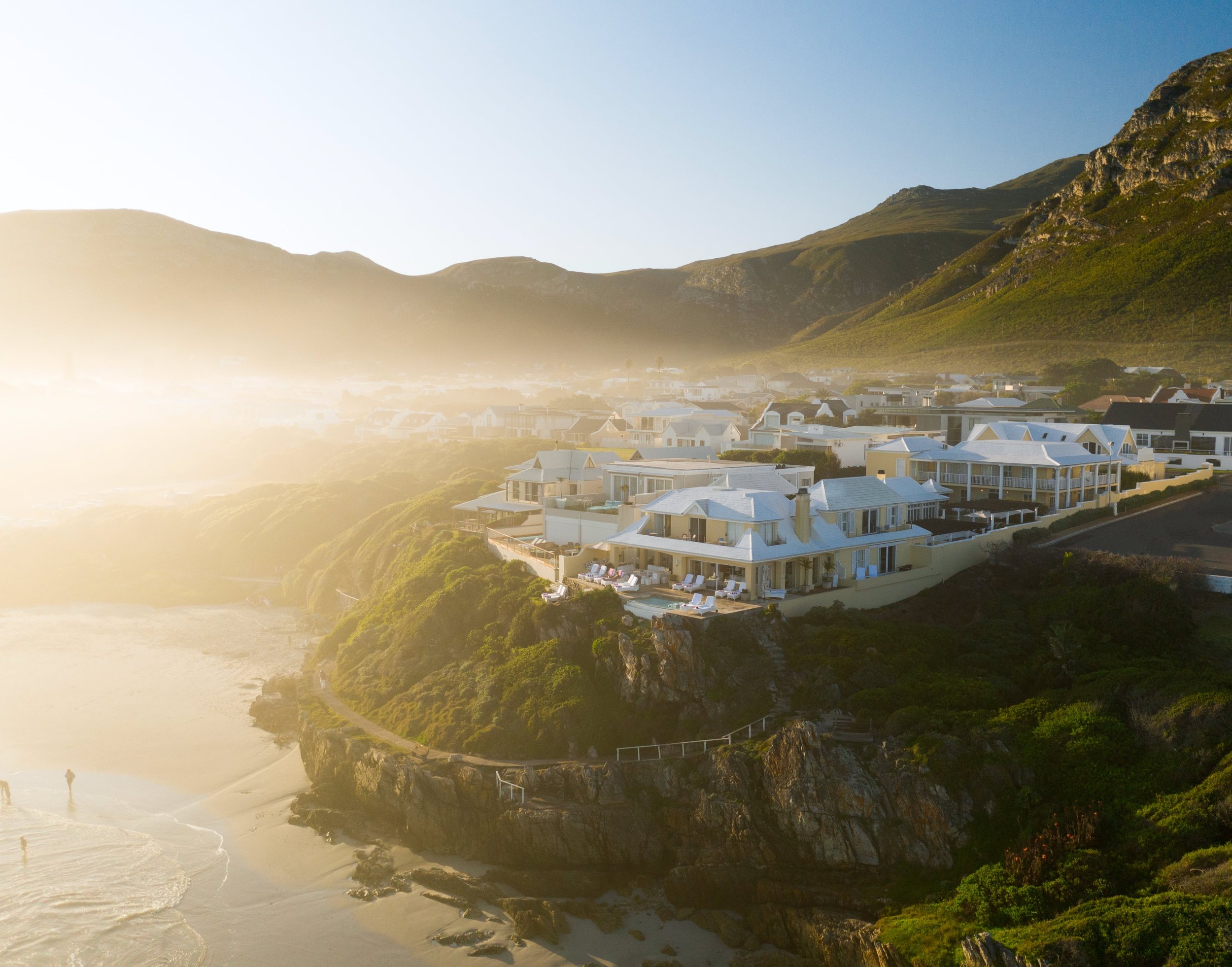Antarctica in April
April might bring to mind the approach of fall in many parts of the world, but in Antarctica, it marks the beginning of a special season where the icy realm undergoes a unique transformation. For the intrepid adventurer, April presents an extraordinary opportunity to experience this secluded wilderness like no other time of the year. With its crisp air, breathtaking solitude, and remarkable changes that nature provides, a trip to Antarctica in April is an unparalleled chance to witness a world on the cusp of seasonal shift. Here, we'll guide you through the many aspects of a trip to the Great White Continent during this distinctive time.
Weather in Antarctica in April
The weather in Antarctica during April is characterized by a transition from summer to autumn. Days are gradually shortening, and the sun, which once circled the sky 24 hours a day, is now dipping below the horizon, painting the landscape in hues of twilight that linger for longer periods. Temperatures can range from near freezing to as low as -20°F (-28°C) depending on your location, so expect variable weather conditions. This is an excellent time for those who prefer the cooler temperatures and can handle the occasional snow squall.
Daylight Hours
Antarctica is globally recognized for its extremes, and the gradual decrease in daylight hours during April plays a pivotal role in shaping this extraordinary spectacle. With each passing day, as sunlight diminishes, one can anticipate the enchanting experience of witnessing the ethereal beauty of the soft Antarctic light. This delicate illumination delicately bathes the icy expanse in a captivating array of peachy-golden hues, creating a surreal ambiance that seems to weave a magical enchantment over the entire landscape.
Weather Conditions
Weather conditions in Antarctica can be remarkably unpredictable, and April is certainly no exception to this rule. The region experiences a mix of snowfall, strong winds, and consistently chilly temperatures during this time. Despite these challenging elements, the transition from summer to autumn brings a subtle calmness to the seas. This change ushers in smoother sailing conditions and enhances the stability of the ice surrounding the Antarctic Peninsula, providing unique opportunities for exploration and observation in this breathtaking environment.
Challenges and Considerations for April Travel
Traveling to Antarctica in April presents unique challenges, but also rare adventures. The first challenge is ensuring that your expedition has a flexible itinerary to accommodate weather-related changes. Ice conditions can be particularly tricky during this time, often resulting in route deviations to safer channels.
Logistics and Safety
It's essential to travel with an experienced expedition team that is equipped to handle the conditions and versed in safety protocol for polar travel. This is also the season of marine mammal migrations, so your expedition might have to be cautious when navigating through wildlife-frequented waters.
Remote Accessibility
Accessibility to certain areas may be restricted due to the encroaching ice, but this limitation can lead to unparalleled experiences, taking you to places that few others venture to see. The key is to adjust your expectations and maintain a sense of adventure.
Where to Go in Antarctica in April
Navigating where to go in Antarctica during April is an expedition in itself. While some areas close down for the winter, others become more accessible. The Antarctic Peninsula continues to be a hotspot due to its relatively warmer temperatures and milder weather.
Notable Destinations
South Georgia Island
For those seeking an unforgettable April sojourn, South Georgia Island emerges as an outstanding destination. Unlike the vast icy landscapes of the Antarctic Peninsula, South Georgia boasts a rich biodiversity, teeming with wildlife. April, being the tail end of the Antarctic summer, offers a rare glimpse into the frenetic life of hundreds of thousands of king penguins, fur seals, and elephant seals as they breed and molt. The island's historical significance, marked by the remnants of whaling stations and the grave of the famed explorer Sir Ernest Shackleton at Grytviken, adds a poignant layer to the adventure. The blend of majestic wildlife, haunting history, and the stark, rugged beauty of the island's mountains and fjords make South Georgia Island a must-visit for those venturing to Antarctica in April.
Drake Passage
The infamous Drake Passage, the body of water between South America's Cape Horn and the South Shetland Islands of Antarctica, serves as the gateway for most Antarctic expeditions. Renowned for its potentially rough seas, the passage is an adventure in its own right. However, during April, the seas can be somewhat calmer, making the crossing a bit more manageable for travelers. This body of water is not just a hurdle to overcome; it's an integral part of the Antarctic experience, offering passengers the chance to spot an array of marine life including albatrosses gliding over the waves and whales breaching the surface. The crossing of the Drake Passage is a rite of passage for Antarctic travelers, symbolizing the transition from the known world into the remote and pristine wilderness of the Antarctic realm.
The South Shetland Islands
The South Shetland Islands, located in the icy waters of the Antarctic region, provide visitors with a diverse and fascinating array of experiences. These islands boast a wealth of wildlife, including penguins, seals, and seabirds, creating a spectacle for nature enthusiasts. Moreover, the islands hold a captivating history of exploration and discovery, with tales of intrepid explorers braving the harsh conditions in search of new frontiers. This unique combination of abundant wildlife and rich historical significance makes the South Shetland Islands a truly remarkable destination for those seeking adventure and discovery in the remote and pristine Antarctic wilderness.
Less Traveled Regions
This time of year encourages exploration of the less-traveled and wilder regions of Antarctica.
The Ross Ice Shelf
The Ross Ice Shelf is a colossal ice mass, one of the largest of its kind, extending into the sea off Antarctica's coast. In April, as the Antarctic summer wanes, the shelf transitions into a breathtaking spectacle of nature, reflecting the soft twilight hues of the diminishing sunshine. This ice shelf serves as a critical research area for scientists studying climate change, glaciology, and marine biology due to its significant impact on global sea levels and its role as a barometer for the health of the planet's polar regions. For adventurers, the sheer magnitude of the Ross Ice Shelf is awe-inspiring, offering a unique perspective on the scale and beauty of Antarctica's icy wilderness. Its vast, unbroken white expanse, framed by towering ice formations and deep crevasses, provides an unparalleled opportunity for exploration and photography, making it a key destination for those brave enough to venture into the heart of the Antarctic continent in April.
The Weddell Sea
The Weddell Sea, bordered by the Antarctic Peninsula and the East Antarctic ice sheet, is among the planet's purest marine environments. Known for its huge icebergs and pack ice, this sea presents a stunning landscape that mesmerizes explorers and scientists. April in the Weddell Sea signals a transition as the Antarctic summer wanes and the sea ice expands, creating a frozen display of beauty and solitude. This region teems with wildlife, including vast emperor penguin colonies. The Weddell Sea holds historical importance, known for challenging early Antarctic explorers with its harsh conditions and treacherous ice. Its pristine ice, diverse wildlife, and historical tales make it a remarkably beautiful and intriguing destination for Antarctic exploration enthusiasts.
What to Do in Antarctica in April
The activities available in Antarctica in April range from the traditional to the distinctly seasonal. This is a prime time for wildlife encounters, as penguins and seals begin to gather in large groups before the sea ice reclaims its expanses during the winter months.
Wildlife Spotting
Eco-tours provide rare opportunities for sighting a myriad of species, including the famed Emperor Penguins, which can be seen in the later part of the month as they gather in rookeries. April also marks the start of the whale-watching season, with humpback and minke whales becoming more common.
Iceberg Cruising and Kayaking
The intricate ice formations are in their prime, sculpted by the elements and pure artistry. Kayaking amidst these floating sculptures is another way to experience their grandeur up close, but it requires a good deal of expertise and caution in these colder waters.
Photography and Stargazing
For the photography enthusiast, the light and natural elements in April create a canvas of unparalleled beauty. It's also a unique chance to capture the transition from the ethereal light to the striking contrast of twilight and the stars.
Wildlife and Natural Phenomena in April
The wildlife and natural phenomena in Antarctica in April are beginning to shift in preparation for the colder months. This is the time for observing fascinating behaviors like penguin rookery formation, seal birthing, and the start of various bird migration patterns. To find out more about Antarctic wildlife, read our blog post, Antarctica Animals: What Wildlife Will I See?
Natural Wonders
The landscapes take on an unreal quality, with the icebergs, pack ice, and shades of blue and white that seem almost alien. It's a time when the environment is most dynamic, with ice cliffs calving, and the sound of the continent seems to resonate more acutely.
Interactions with Wildlife
With wildlife congregating in particular areas, these interactions can be more profound, as you witness their preparations for the long, dark months ahead. It's a reminder of the rhythm of the environment and the resilience of the creatures that call Antarctica home.
Events and Happenings in Antarctica in April
While not known for its bustling events calendar, Antarctica does have its fair share of activities and endeavors. April often sees the completion of various research seasons, with scientists wrapping up their work, and you might witness the final launches of scientific balloons from the icy runway.
Observing Research in Action
If you're lucky, you might have a chance to witness a field research activity, which provides a unique perspective on the work being undertaken in this challenging environment. These moments can be truly inspiring, connecting you to the importance of preserving such delicate ecologies.
Engaging with Explorers
Interactions with fellow travelers and researchers can lead to stimulating discussions and the sharing of insights. Visitors are often welcomed to take part in events that mark the end of the season, offering a sense of community and shared purpose.
Cultural and Historical Significance
Antarctica's history is deep and rich, filled with stories of human endeavor and resilience. April allows for exploration of historical sites left by early explorers, and a deeper appreciation for the cultural significance of this formidable land.
Exploratory Legacy
There's something truly awe-inspiring about standing in the same locations where famed explorers like Sir Ernest Shackleton and Robert Falcon Scott embarked on their daring missions to the icy realms of Antarctica. The wind whispers tales of their courage and struggles, while their huts, preserved in time, offer a glimpse into the harsh conditions they endured. Each artifact found within these historic structures serves as a poignant reminder of the challenges faced, the sacrifices made, and the indomitable spirit that united these brave explorers in the pursuit of the unknown.
Indigenous Legacies
While there are no native human populations in Antarctica, the continent's connection to the histories of indigenous peoples from neighboring regions is profound. These indigenous communities have contributed valuable knowledge and traditions that continue to shape present-day conservation efforts and sustainability practices on the continent. By honoring their wisdom and heritage, Antarctica's conservation strategies are enriched with a deeper understanding of the land and its significance in the broader context of environmental preservation.
Environmental Conservation Efforts
The call for environmental conservation in Antarctica has never been more urgent. The specter of climate change hangs over the continent's future, and April is a time to recognize the measures and practices necessary to preserve its unspoiled beauty.
Sustainable Practices
Exemplary tour operators and organizations champion sustainable practices, from waste management to responsible tourism guidelines. Visitors are encouraged to support these initiatives, whether it's through learning and spreading awareness or direct contribution.
Personal Responsibility
Every individual has a role in preserving Antarctica, from reducing single-use plastics to appreciating and respecting the natural environment without causing harm. The fragility of the ecosystem is a poignant reminder to take personal responsibility for our impact on the planet.
Practical Advice
Preparation is key for a trip to Antarctica in April. From clothing requirements to health considerations, understanding the needs of your body and the environment is vital for a comfortable and safe expedition.
Packing for the Climate
Layering is essential to combat the cold, with a focus on moisture-wicking materials that can handle the occasional snowfall and provide flexibility for the changing conditions. Don't forget the sturdy, waterproof boots for shore landings.
Staying Healthy
The Antarctic climate can strain even the most seasoned travelers. Ensure you're in good health before your trip and follow the guidance of your expedition team on staying safe and well. Being mindful of your limits and the potential for seasickness or sunburn is crucial.
Conclusion
Antarctica in April offers an unparalleled adventure for those who are willing to take on the challenge. It's a chance to witness nature at its most raw and to reflect on our own impact as individuals and as a society.
By packing appropriately, staying informed about health and safety, and immersing yourself in personal stories and experiences, you can ensure that your journey is not only unforgettable but also responsible and respectful towards this truly unique destination. So, come prepared, and get ready to be awestruck by the wonders of Antarctica in April. Remember to always leave no trace behind and cherish every moment on this remarkable continent. Happy travels!



